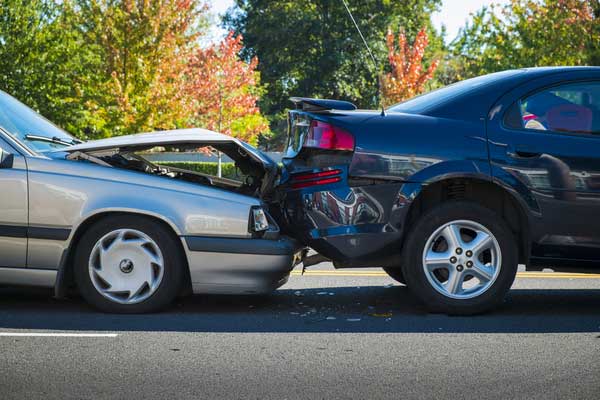- January 20, 2023
Many people contact a Greenville car accident attorney and bring with them little direct evidence to support their claim. They may have been too severely injured to be able to take photos and videos at the crash scene. Or the psychological shock made them unable to do anything. The lack of evidence makes negotiations in a car accident claim more difficult. However, experienced lawyers knows that they can rely on circumstantial evidence.
This is the kind of evidence that does not directly show what happened. But, through logical inference, anyone is able to form an idea about the sequence of the events. In many situations, an experience Greenville car accident attorney relied on circumstantial evidence to win a car accident claim. In the end, this type of evidence was sufficient for a jury to determine fault and to award economic and non-economic damages to the injured party.
What Is Circumstantial Evidence and How Does It Differ from Hearsay?
If you watch crime shows on TV, you may believe that you understand certain legal terms. For instance, everyone knows that hearsay is when someone tries to testify about an event that they did not witness but heard about from another person. This is true, a person can give testimony only about things they saw and heard themselves.
By contrast, circumstantial evidence does not directly prove a disputed fact, but allows a fact finder to draw a reasonable inference about the existence or inexistence of a fact based on evidence.”For example, if the police find skid marks that weave in and out of lanes, they can infer that the driver had lost control of the vehicle and they were trying to apply the brakes.
The Role of Circumstantial Evidence in Winning a Car Accident Claim in South Carolina
In the experience of any Greenville car accident attorney, no case is cut and dry. It’s rare for one driver to be 100% at fault for a crash. In reality, there are many factors that lead to a traffic accident, and all the drivers involved have a proportion of responsibility.
And, as your attorney will explain to you, our state applies the comparative negligence principle. This means that a person has to be less than 50% at fault for their accident in order to have the right to file a car accident claim. Even if they have this right, the total amount of damages shall be reduced by their percentage of fault.
In various cases, your lawyer will rely on circumstantial evidence to establish your accurate proportion of fault. This type of evidence can:
- Create a full picture where direct evidence is incomplete
- Corroborate direct evidence to build a stronger argument
- Support an argument in the absence of direct evidence.
Moreover, circumstantial evidence is extremely valuable after a hit-and-run accident. In the absence of the other vehicle, any type of evidence it leaves behind can be useful to identify the at-fault driver and hold them liable.
Is Circumstantial Evidence Allowed in Court?
Many of our clients are confused about what they have to prove in a personal injury lawsuit. They know the famous phrase “proving beyond reasonable doubt”. But that principle is applicable only to criminal cases. It is understandable why no doubt can exist, when people’s freedom is at stake. However, in civil cases – like the one arising out of a car accident claim – the acceptable standard is the preponderance of the evidence.
What exactly does it mean? It simply means that the evidence one party presents is more credible than the other party’s evidence. And, yes, circumstantial evidence is acceptable in any civil case – as it is in any case presented before any US court of justice.
The Most Common Examples of Circumstantial Evidence a Lawyer May Use
So, how can a Greenville car accident attorney win your case when direct evidence is scarce or not really conclusive? Here are some of the types of circumstantial evidence a lawyer will rely on:
1. Skid Marks
We already used skid marks as an example of circumstantial evidence. They can tell a very convincing story about how the accident happened. Where there are no skid marks, an attorney will reasonably infer that the driver did not apply the brakes.
Also, depending on the length of the skid marks, the police or accident reconstruction experts can estimate the speed of the car. Thus, your attorney will prove that the other driver was more at fault because they were speeding. This will help you win your car accident claim.
2. The Damage to the Vehicle
There is always a dispute concerning which car hit the other. This is sometimes debatable if there are no witnesses and no CCTV cameras in the area. However, the dents and other types of damages each vehicle sustained offer many useful clues.
Experts can reconstruct the way an accident happened by looking at the position of the cars after the crash and the damages they suffered. This is sometimes the only way of proving what happened when both drivers point the finger at each other.
3. Mobile Phone Records
Without witnesses, you may not be able to prove that the other driver was texting and driving. They only have to put their phone away and claim they never used it. At this point, a Greenville car accident attorney can request the other driver’s records from their mobile carrier. They record the activity of the phone. If a text was sent at approximately the time of the crash, it can be reasonably inferred that the driver was distracted.
Let Our Law Firm Find the Necessary Evidence to Prove Your Case
Not all car accident claims are easy to prove. If you were unable to collect your own evidence, a Greenville car accident attorney has to look for other ways of proving your cases. When necessary, they will rely on circumstantial evidence.
This is not an ideal situation, but this is exactly why you need an experienced attorney – to prove a difficult case. We will be able to tell you about the merits of your case during a free initial appointment, so call us at 864-310-7897 as soon as possible after your accident!


